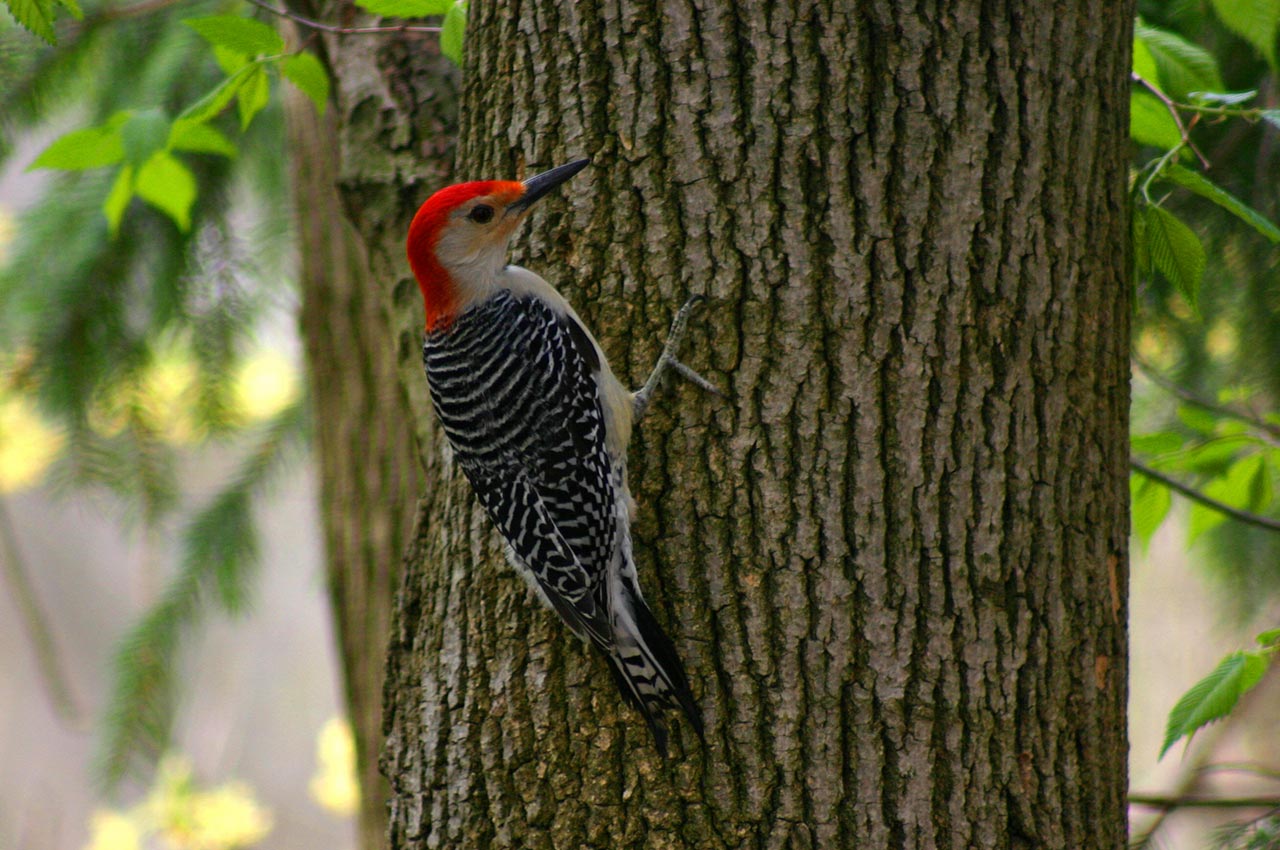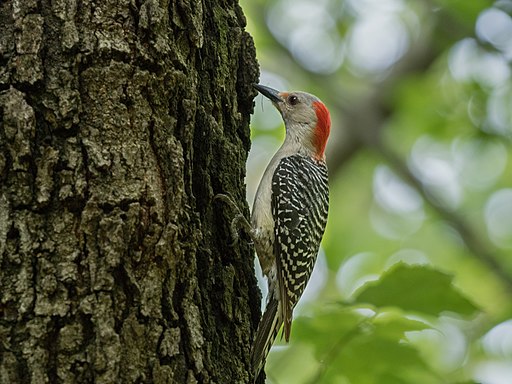Woodpeckers: A Comprehensive Guide to Understanding These Unique Birds
Woodpeckers, with their distinctive behaviors and physical characteristics, have actually long astounded the interest of ornithologists and nature enthusiasts alike. From their rhythmic drumming resembling with the woods to their remarkable adjustments for scaling tree trunks effortlessly, these birds provide a fascinating study in bird biology. What genuinely sets woodpeckers apart is not simply their striking appearance yet likewise their vital duty in preserving the fragile balance of ecosystems. As we discover the elaborate anatomy, diverse species, and environmental significance of woodpeckers, a much deeper gratitude for these one-of-a-kind birds and the secrets they hold unravels.

Woodpeckers' Drumming Habits
Woodpeckers display a rhythmic and accurate drumming behavior that serves numerous crucial features in their day-to-days live. This habits is mainly connected with communication, region protection, and foraging. The unique drumming noise is created by the fast pecking of their beaks against hard surface areas such as tree trunks, branches, or perhaps metal objects.
Interaction is a critical facet of woodpecker habits, and drumming plays a significant duty in this procedure. Woodpeckers use drumming to establish their visibility, draw in mates, and keep contact with their partners and children. The frequency, strength, and duration of drumming sequences communicate particular messages to various other woodpeckers in the location.
In addition to interaction, woodpeckers utilize drumming actions for area defense. Woodpeckers in Florida. The loud and recurring drumming serves as a warning to possible intruders, signifying that the area is currently declared. By developing their territory via drumming, woodpeckers decrease the chance of problems over important resources such as food and nesting sites
Moreover, woodpeckers likewise employ drumming as a foraging method. The rhythmic pecking assists them situate bugs concealing below the bark of trees by developing vibrations that interrupt the prey's cover-up. This actions showcases the adaptability and ingenuity of woodpeckers in utilizing their drumming skills for numerous important objectives.
Unique Adaptations for Tree Climbing
Having actually mastered the art of drumming to interact, safeguard territory, and forage, woodpeckers have progressed unique adaptations that promote their impressive climbing capabilities in their arboreal environments. One vital adaptation is their specific feet. Woodpeckers have zygodactyl feet, with 2 toes aiming forward and two toes directing backwards. This setup provides a strong grip on the vertical surface areas of trees, permitting them to stick effortlessly while foraging for insects or drumming. Furthermore, woodpeckers have tight tail plumes that work as a prop to support their bodies as they climb. These tail feathers offer stability and balance, allowing woodpeckers to navigate up tree trunks with accuracy and dexterity.
Furthermore, woodpeckers have effective neck muscular tissues and an one-of-a-kind head framework that aid in their climbing abilities. Their solid neck muscular tissues enable them to quickly peck at tree bark without experiencing whiplash, while their thick skull and tiny mind function as shock absorbers, safeguarding them from the impact of repeated drumming. These adjustments jointly allow woodpeckers to navigate the upright world of trees with efficiency and grace.

Function of Woodpeckers in Ecological Communities
Playing a critical duty in woodland communities, woodpeckers add dramatically to the balance and health and wellness of their environments via their unique habits and communications with various other species. One of the essential environmental features of woodpeckers is their duty in controlling insect populations. By foraging for bugs under the bark of trees, woodpeckers assist manage parasite populaces, preventing break outs that official source might hurt the general wellness of the woodland. In addition, woodpeckers develop cavities in trees that serve as essential nesting sites for a range of other bird varieties, advertising biodiversity within the environment.
In addition, the drumming and vocalizations of woodpeckers play an important duty in interaction and territory facility. These audios not only serve to attract companions but also help specify limits between different woodpecker regions, lowering disputes and promoting an unified conjunction within the forest community. On the whole, the visibility of woodpeckers in forest communities highlights their importance as keystone varieties, influencing the dynamics and operating of these habitats in complex methods.
Anatomy: Specialized Beaks and Feet
In the detailed web of woodland ecosystems, the specialized beaks and feet of woodpeckers are necessary adaptations that enable them to accomplish their important eco-friendly roles. Woodpeckers have unique anatomical attributes that are specifically developed to assist them in their foraging and nesting behaviors.
The most distinguishing characteristic of woodpeckers is their strong, chisel-shaped beaks. These beaks are completely adjusted for drilling into wood to reveal pests, larvae, and sap covert underneath the bark of trees. The solid muscles and durable structure of their beaks permit woodpeckers to eat a rate of up to 20 times per second without triggering damages to their heads.
In addition, woodpeckers have specialized feet that aid in their acrobatic climbing capabilities. Their feet have 2 toes aiming onward and 2 toes pointing backward, offering a strong hold on upright surface areas (Woodpeckers in Florida). This one-of-a-kind foot setup, along with stiff tail feathers that serve as a helpful prop, enables woodpeckers to hold on to tree trunks and branches effortlessly while they look for food or dig deep into nesting dental caries
Woodpecker Variety Variety
What variables add to the impressive variety of woodpecker varieties throughout various environments and areas? resource Woodpeckers are a varied group of birds discovered across various communities worldwide, with over 200 recognized species exhibiting adaptations to various settings. One vital variable driving this variety is the accessibility of suitable environments. Woodpeckers have developed to occupy a range of settings, from woodlands and forests to meadows and deserts, each offering distinct obstacles that have actually influenced the evolution of distinct woodpecker types.
Another adding factor to woodpecker varieties diversity is their specialized feeding actions. Different varieties have advanced to make use of numerous food sources, such as pests, tree sap, fruits, and nuts, resulting in the important site growth of particular adjustments in beak shape, dimension, and strength. These adjustments enable woodpeckers to forage effectively in their corresponding habitats, lowering competition amongst species and promoting particular niche differentiation. Furthermore, geographical isolation and historic variables have contributed in shaping the distribution and variety of woodpecker varieties, resulting in the vast array of specialized adaptations seen in these remarkable birds.

Final Thought
In conclusion, woodpeckers are interesting birds that exhibit special drumming actions, specialized adaptations for tree climbing, and play vital roles in ecological communities. With a diverse variety of woodpecker varieties discovered worldwide, these birds are crucial for maintaining the health and wellness and equilibrium of forests and forests.